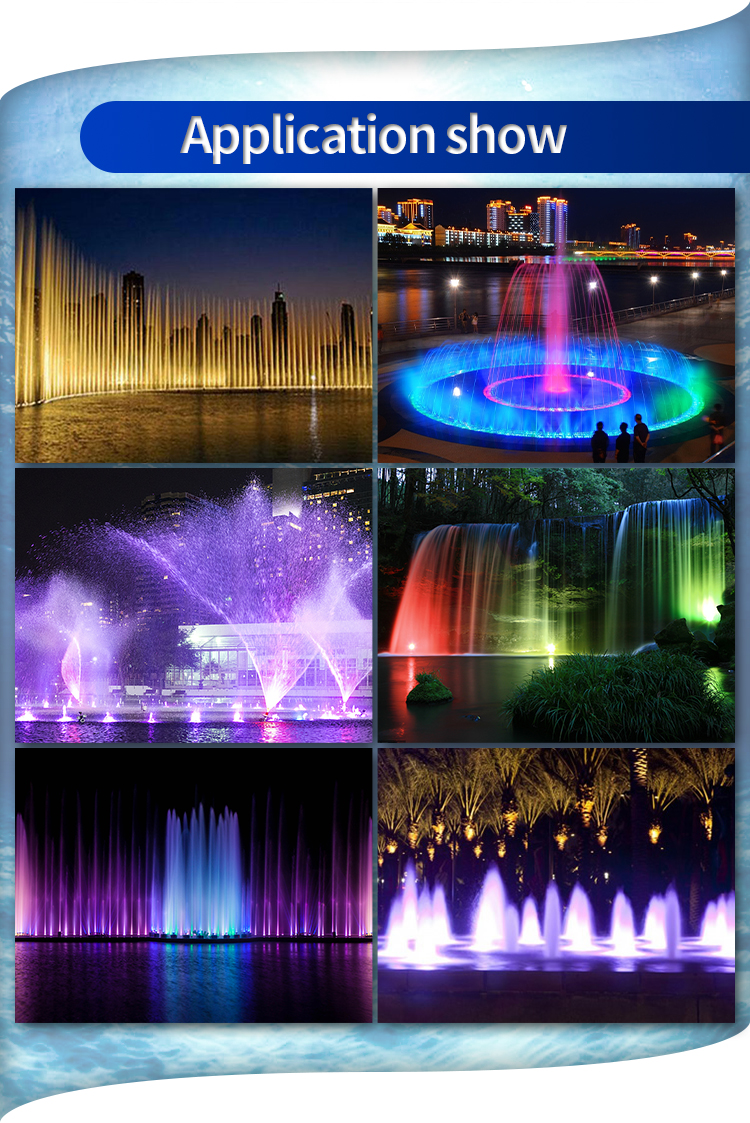
Best LED Underwater Light Manufacturer and LED Outdoor Lighting Supplier in China
Underwater lights are specialized lighting fixtures engineered for safe, vibrant illumination below water surfaces. Whether you’re lighting a swimming pool, fountain, pond, or waterfall, LED underwater lights provide energy-efficient performance and create dazzling visual effects. Their waterproof construction, robust materials, and brilliant lighting output make them essential for any architectural or landscape water feature.
We specialize in manufacturing professional-grade LED underwater lighting for residential, commercial, and public environments. Our products meet the highest safety standards and offer both static and dynamic lighting options—including color-changing RGB underwater lights for dramatic ambiance.
What Is an Underwater Light?
An underwater light is a submersible LED fixture designed to operate safely and efficiently beneath water. These fixtures are completely sealed, IP68-rated, and typically constructed from stainless steel, brass, or reinforced plastic to withstand long-term immersion.
They are commonly installed in:
-
Swimming pools
-
Fountains and waterfalls
-
Garden ponds and koi ponds
-
Water sculptures
-
Marina or dock areas
-
Spa and wellness centers
Types of Underwater Lights
| Type | Description | Ideal For |
|---|---|---|
| LED Pool Light | Wall-mounted, high brightness | Pools, spas, resorts |
| Fountain Light | Compact, narrow beam | Water jets and nozzles |
| RGB Underwater Light | DMX, remote, or app control | Mood lighting and shows |
| Recessed Pond Light | Embedded in pond base | Decorative ponds, waterfalls |
| Surface-Mounted Light | Bracket-mount on pool or fountain wall | Retrofitting and customization |
| Solar Submersible Light | Solar-powered | Remote or decorative ponds |
Key Features of Our LED Underwater Lights
1. IP68 Waterproof Design
Each unit is fully sealed with high-grade silicone gaskets and pressure-tested housings, ensuring zero water ingress.
2. Marine-Grade Stainless Steel Housing
Constructed with SS316 or SS304 for corrosion resistance in chlorine or saltwater environments.
3. Energy-Efficient LED Chips
Our underwater lights use CREE, Bridgelux, or Epistar LEDs, delivering bright, consistent output with low energy use.
4. Single-Color or RGB Options
Choose from warm white, cool white, blue, or dynamic RGB/RGBW with DMX, DALI, or RF control.
5. Low Voltage Operation
12V or 24V DC low-voltage input ensures safe operation in wet environments, especially in pools and public areas.
6. Optional Beam Angles and Lenses
Available in 15°, 30°, 45°, or 60° beam angles for spotlighting, washing, or soft ambient effects.
Applications of Underwater Lighting
-
Swimming Pools & Spas
Install wall-mounted or flush-mount pool lights for crystal-clear nighttime swimming and elegant ambiance. -
Fountains & Water Features
Use compact fountain spotlights to illuminate water arcs, jets, and sculptures. -
Garden Ponds & Koi Pools
Highlight fish, aquatic plants, or waterfall flows with submerged lighting. -
Architectural Water Walls
Add linear LED underwater lights at the base for stunning upward effects. -
Public Parks & Plazas
Combine RGB underwater lighting with programmable DMX control for nighttime attractions.
Underwater Lamp, Submersible Light, Under Water Light, Fountain Light, Pool Light
Jiangmen Synno Lighting Co., Ltd. , https://www.synnoled.com